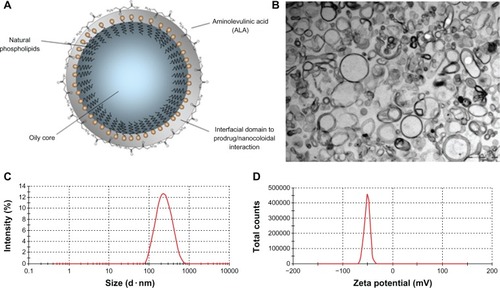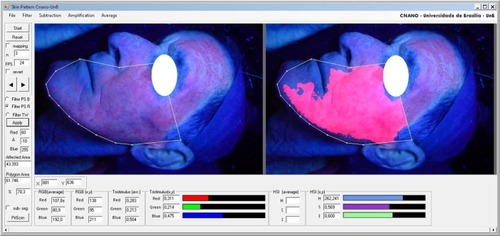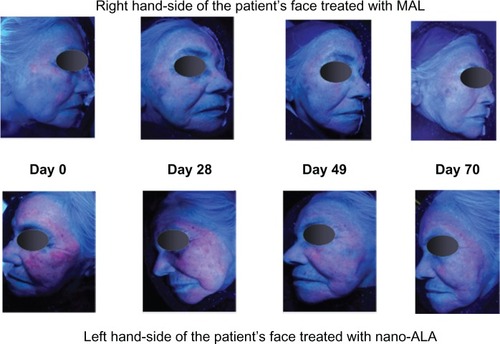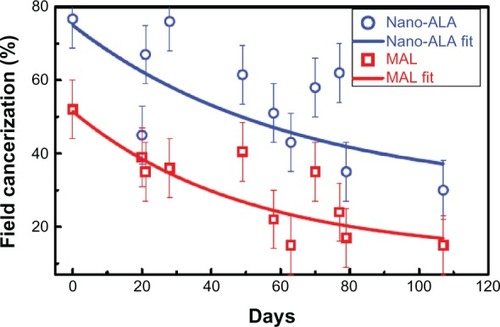Figures & data
Figure 1 (A) Diagram representing the as-produced nanoemulsion, (B) typical transmission electron micrograph of the as-produced nanoemulsion, (C) typical hydrodynamic size distribution of the 5-aminolevulinic acid-loaded nanoemulsion obtained by dynamic light scattering, and (D) typical zeta potential distribution of the 5-aminolevulinic acid-loaded nanoemulsion obtained by electrophoretic measurement.

Table 1 Physicochemical parameters of nanocapsules loaded and not loaded with 5-aminolevulinic acid
Figure 2 White polygon on both images defines the region of interest for color segmentation of field cancerization.

Figure 3 Sequence of images showing the time course of photodynamic therapy.

Figure 4 Time decay of field cancerization.
